Last updated on
Discover the ideal height for floating shelves in your kitchen to maximize functionality and elevate your space’s aesthetics.
If you’re looking to add some extra storage space in your kitchen, floating shelves might just be the perfect solution. Not only do they look sleek and modern, but they also provide a practical way to keep your kitchen organized and clutter-free.
However, one of the most common questions people have when it comes to installing floating shelves is how high they should be hung. In this article, we’ll explore the factors you need to consider when deciding on the height of your floating shelves in the kitchen.
So grab a cup of coffee and let’s dive in!
Key takeaways:
- Ideal height for storage and display shelves varies.
- Consider purpose, accessibility, and who will be using them.
- Standard heights range from 18-24 inches above countertops.
- Customizing shelf heights based on needs is recommended.
- Factors like kitchen style and materials impact shelf height.
What's Inside
Ideal Height for Floating Shelves

When it comes to determining the ideal height for your floating shelves, there are a few factors you need to consider. The first is the purpose of your shelves.
Are they meant for storage or display? If you plan on using them primarily for storage, then you’ll want to make sure they’re within easy reach so that you can access items without having to strain or stretch too much.
On the other hand, if your goal is purely aesthetic and decorative purposes, then feel free to experiment with different heights until you find what looks best in your space.
Another factor that will influence shelf height is who will be using them. If children or pets frequent the kitchen area where these shelves are installed, it’s important not only to ensure their safety but also their accessibility.
In general terms though – as a rule of thumb – most people tend towards hanging floating kitchen shelving between 18-24 inches above countertops and work surfaces; this allows enough clearance below while still keeping frequently used items within arm’s reach.
Factors Influencing Shelf Height
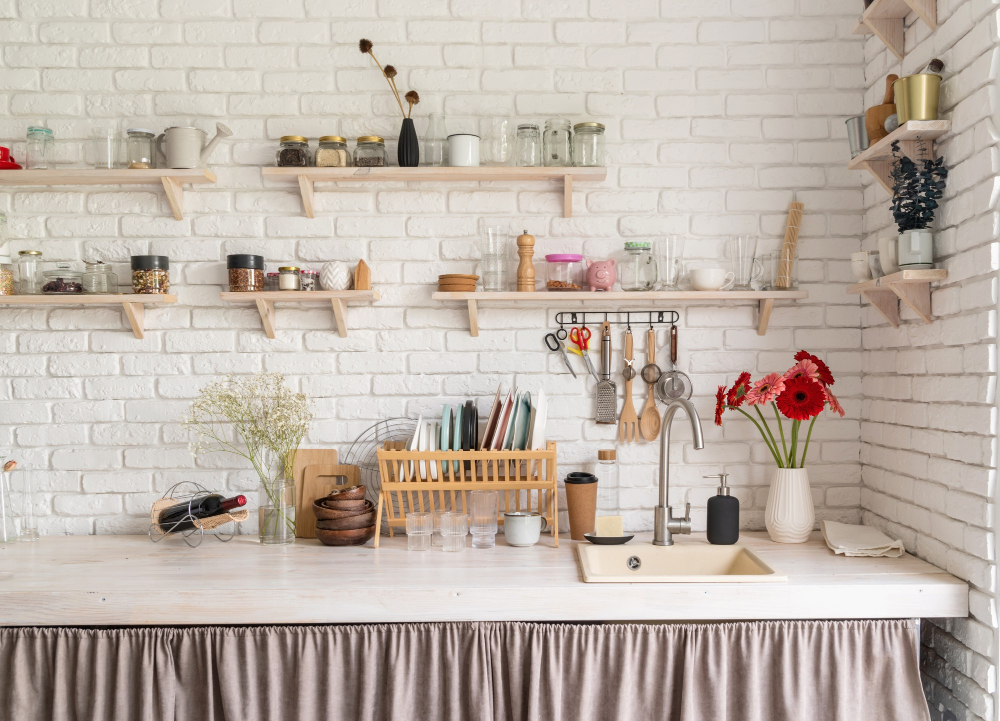
One of the most important is how you plan on using your shelves. For example, if you’re looking to store small appliances like a toaster or blender, then you’ll want to make sure that they can fit comfortably on your shelf without taking up too much space.
Another factor that will influence shelf height is whether or not you have any upper cabinets in your kitchen. If so, then it’s essential to ensure that there’s enough clearance between them and your floating shelves so that they don’t interfere with each other.
The size of items being stored also plays a role in determining shelf height; taller items such as bottles may require more vertical space than shorter ones like spices jars.
Lastly, consider who will be using these shelves and their accessibility needs – elderly people might prefer lower shelving while families with young children should keep things out of reach from curious hands!
Standard Shelf Heights
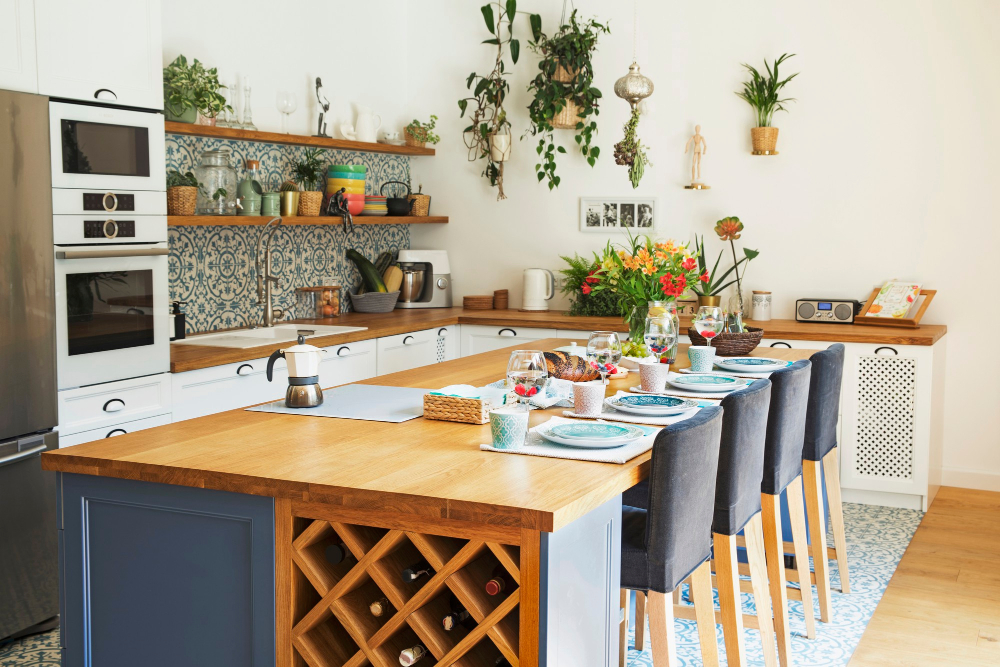
These measurements have been determined based on the average height of people and the most common items found in kitchens.
The standard height for a bottom shelf is around 18 inches above the countertop. This allows enough space for larger appliances like blenders or mixers to fit comfortably underneath while still leaving room on top of the shelf for smaller items like spices or jars.
For upper shelves, a good rule of thumb is to place them between 12 and 18 inches above your lower shelf. This provides ample space for storing plates, bowls, glasses and other dishware without making them difficult to reach.
It’s important to note that these are just general guidelines; you should always consider your own needs when deciding on shelving heights. If you’re taller than average or have specific storage requirements (such as large pots), customizing your shelving heights may be necessary.
Keep in mind that different kitchen styles may require different shelving arrangements – open-concept kitchens with high ceilings might benefit from higher-than-average shelves while small galley-style kitchens might need lower ones.
Customizing Shelf Heights
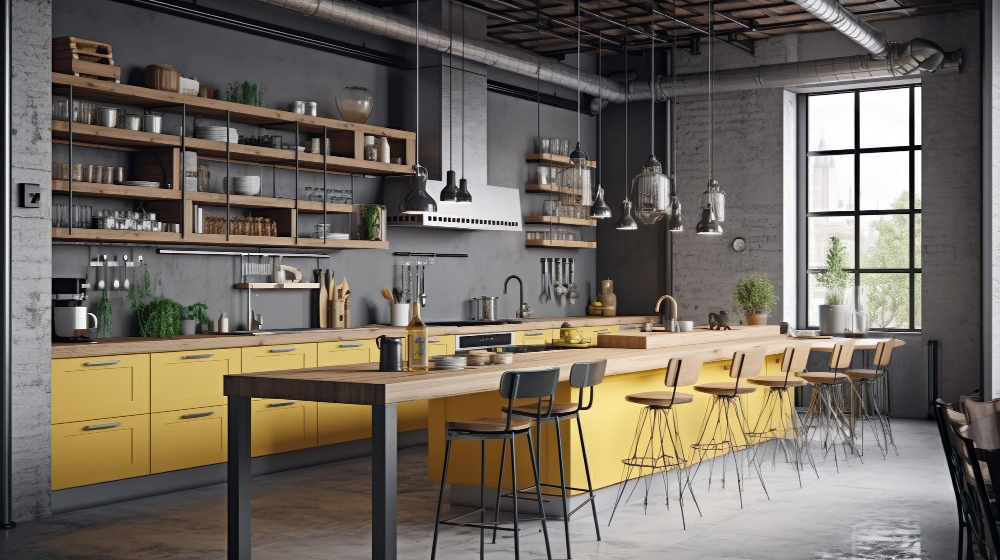
For instance, if you have a tall family member who frequently uses the kitchen, it might be best to install some higher-than-average shelves so that they can easily access items without having to bend down. Similarly, if you have small children or pets in the house and want them to be able to reach certain items safely, installing lower-than-average floating shelves could be a good idea.
Another factor that might influence shelf height is what exactly will go on those particular shelves. If you plan on storing large appliances like blenders or mixers on your floating kitchen shelving units, then it’s important that they’re installed at an appropriate height where these bulky items won’t get in the way of other activities in the room.
Height for Open Shelving
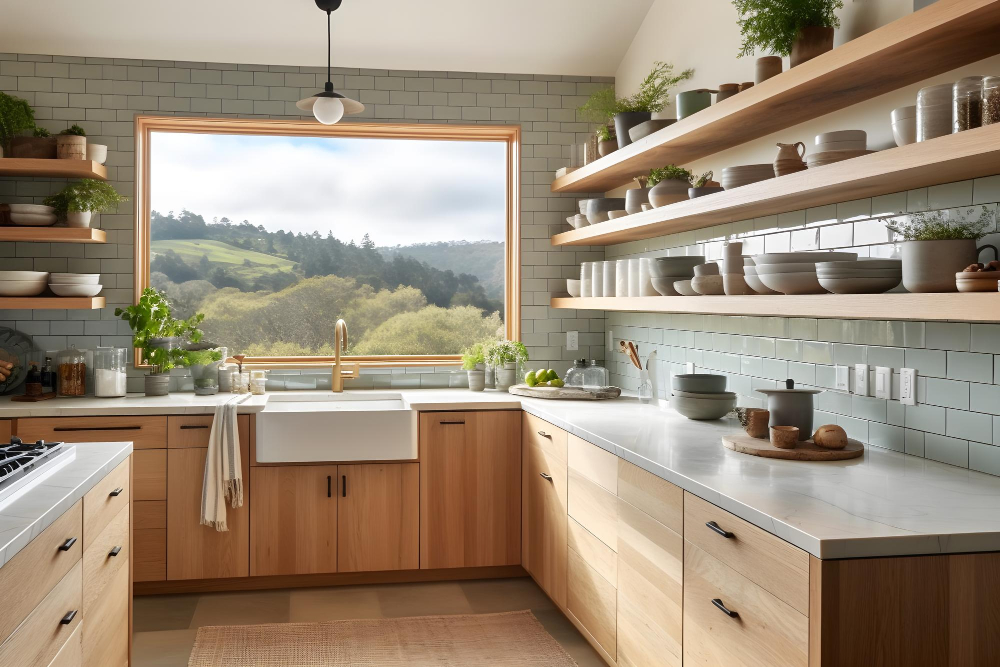
If you’re using open shelves for everyday items like plates and bowls, a good rule of thumb is to hang them at around shoulder height so that they are easily accessible. This also makes it easier for guests or family members who may be helping in the kitchen.
However, if you plan on displaying decorative items such as vases or artwork, consider hanging your shelves higher up so that they can be seen more easily. You don’t want these pieces obstructed by other objects placed lower down.
Another factor to consider when deciding shelf heights is the overall design aesthetic of your kitchen. For example, if you have high ceilings and want a dramatic look with tall cabinets and appliances towering over everything else in sight – then taller floating shelves might work well too!
Height for Closed Shelving
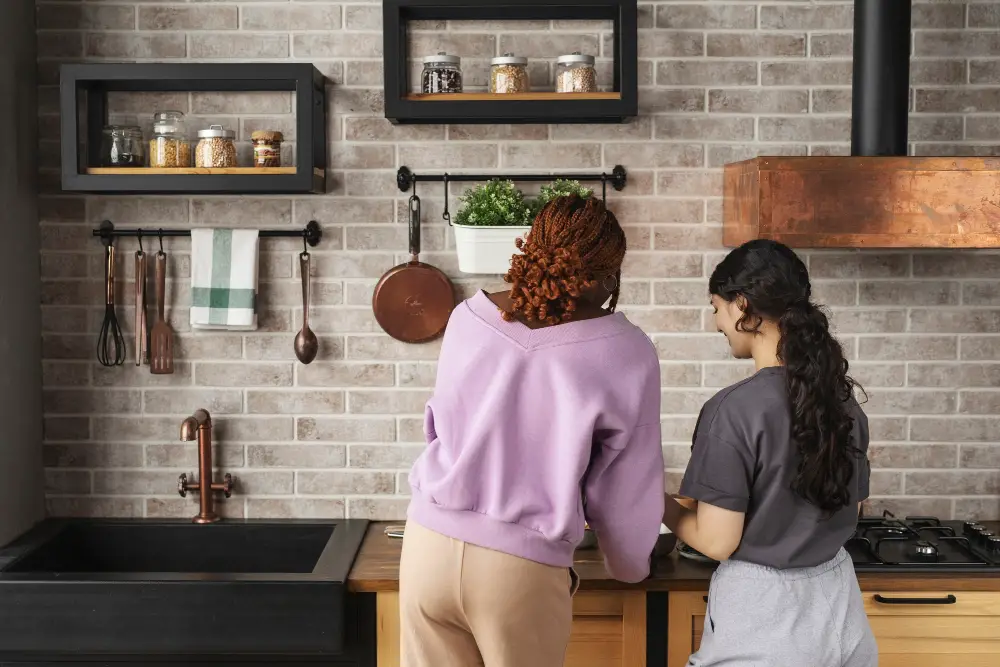
The height of closed shelves should be determined by the size and shape of the items you plan to store on them. If you have large appliances or bulky cookware, it’s best to leave more space between each shelf so that they can fit comfortably without touching one another.
On the other hand, if you’re planning on storing smaller items like spices or canned goods, then closer spacing between shelves may work better for your needs. It’s important to note that while closed shelving provides a clean look in your kitchen, it can also make finding specific items more challenging than open shelving.
When deciding on the height of your closed shelves in the kitchen, consider how often you use certain appliances and cookware versus how frequently you need access to pantry staples like flour and sugar. This will help determine which type of storage solution works best for your lifestyle.
Shelf Height for Small Appliances

This is where floating shelves come in handy. By installing a shelf at the right height for your small appliances, you can keep them off the counter while still having them within reach.
The ideal height for a shelf that will hold small appliances depends on the size of your appliance and how often you use it. For example, if you use your blender every day for smoothies or protein shakes, then having it at eye level would be convenient.
However, if you only use your blender occasionally or have limited cabinet space above your countertop area then placing it higher might make more sense.
Proper Spacing Between Shelves

The distance between each shelf will depend on what you plan to store on them and how much space you need for each item. For example, if you’re planning to use the shelves for storing small appliances like a toaster or blender, make sure there’s enough room above and below the appliance so that it can be easily removed without hitting other items.
On the other hand, if you’re using your floating shelves primarily for displaying decorative items such as vases or picture frames, then less space may be needed between each shelf. In general, a good rule of thumb is to leave at least 10-12 inches of vertical space between each shelf.
It’s also essential to consider how many shelves are being installed in total when determining spacing. If only two or three are being hung side by side with ample wall length available then they can be spaced further apart than if several were going up together along one section of wall.
Shelf Height for Cookbooks
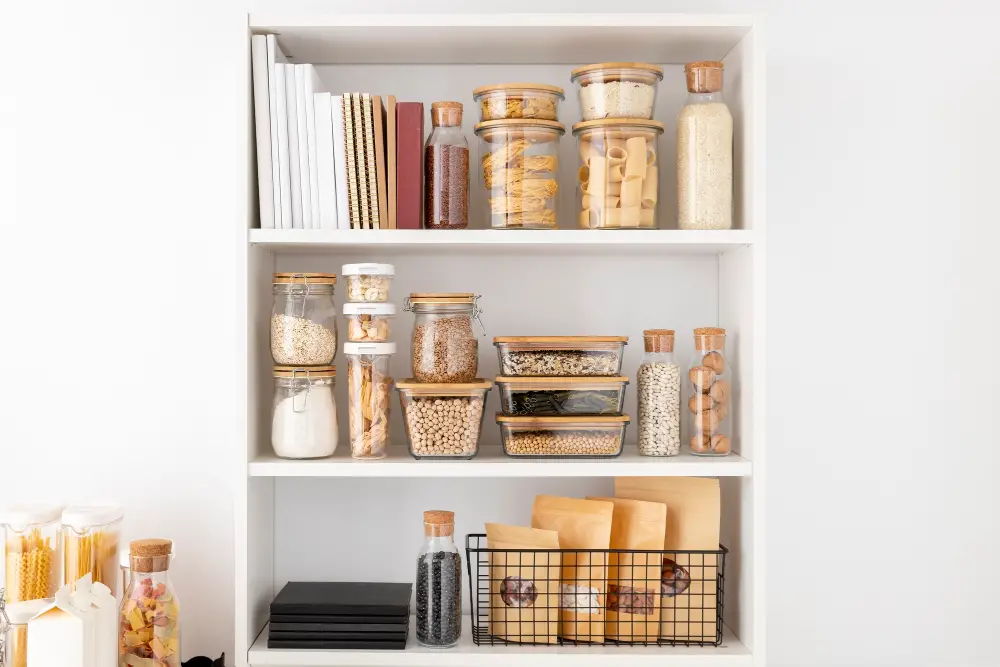
When deciding on the height of your floating shelves, it’s important to consider the size of your cookbook collection. A good rule of thumb is to measure the tallest book you own and add an extra inch or two above that measurement when determining shelf height.
If you have a large collection, consider dedicating an entire shelf solely for cookbooks. This will not only keep them organized but also make it easier to find what you’re looking for while cooking up a storm in the kitchen.
Another factor to keep in mind when positioning shelves with cookbooks is lighting. If possible, try placing these shelves near natural light sources like windows or under cabinet lighting fixtures so that they are well-lit and easy to read from while cooking.
Shelves for Displaying Decor
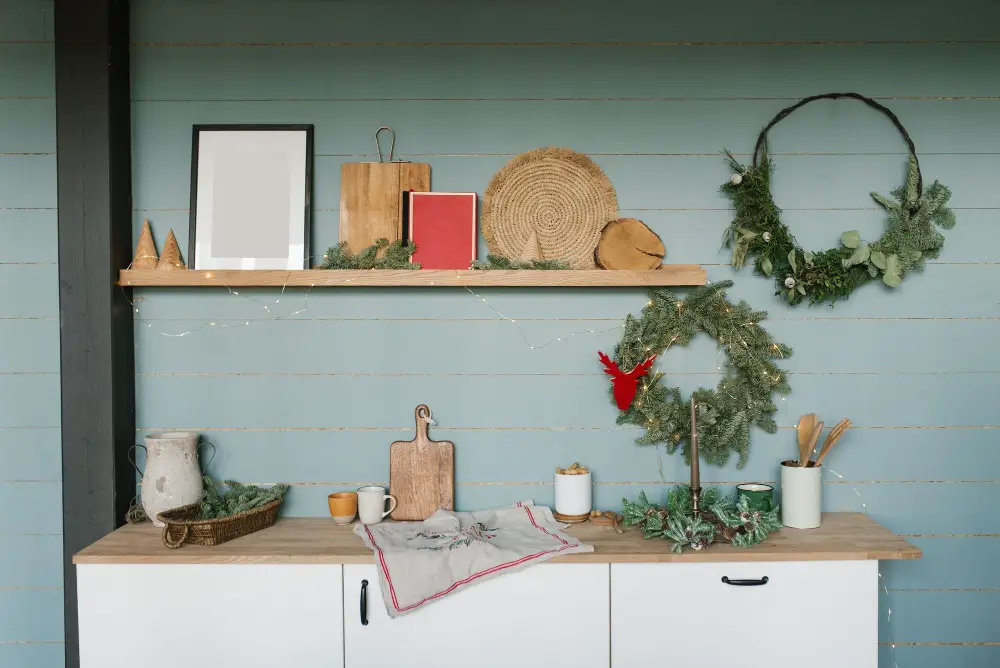
When it comes to displaying decor, the height of your floating shelves is crucial. If you plan on using them for decorative purposes, consider hanging them at eye level or slightly above eye level for maximum impact.
When arranging items on the shelf, start with larger pieces and work towards smaller ones. This will create a balanced look that draws the eye in without overwhelming it.
Grouping similar objects together can also help create a cohesive display.
Consider incorporating different textures and materials into your display to add visual interest and depth. For example, mix ceramic vases with wooden sculptures or metal candlesticks.
Remember that less is often more when it comes to decorating floating shelves – overcrowding can make them appear cluttered rather than curated.
Height for Corner Shelves

They can be used to store everything from spices and cooking oils to small appliances and cookbooks. However, determining the ideal height for corner shelves can be tricky.
One important factor to consider is the size of your items. If you plan on storing larger items such as mixing bowls or blenders, you’ll want your shelf height to accommodate their size without making them difficult to access.
Another consideration is whether you’re using open or closed shelving in the corners of your kitchen. Open shelving allows for more flexibility when it comes to adjusting shelf heights since there are no cabinet doors getting in the way.
If you’re opting for closed cabinets with lazy susans or other rotating mechanisms inside, make sure that each shelf’s height accommodates what will go on it while still allowing easy rotation without knocking anything over.
Floating Shelf Height for Different Kitchen Styles

Whether you prefer a traditional farmhouse look or a sleek modern aesthetic, the height of your floating shelves can play an important role in achieving the desired style.
For example, if you have a rustic or country-style kitchen with exposed brick walls and wooden beams, consider installing your floating shelves at varying heights for an eclectic feel. On the other hand, if you have a contemporary kitchen with clean lines and minimalistic decor elements, opt for uniform shelf heights that align perfectly with one another.
If your kitchen has high ceilings or tall cabinets that make it difficult to reach items on higher shelves comfortably; consider placing them lower than usual while still maintaining proper spacing between each shelf. This will not only make accessing items easier but also create visual interest by breaking up long stretches of wall space.
Ultimately when deciding on floating shelf height in different kitchens styles; take into account both functionality and aesthetics as well as personal preference.
Installing Shelves Safely
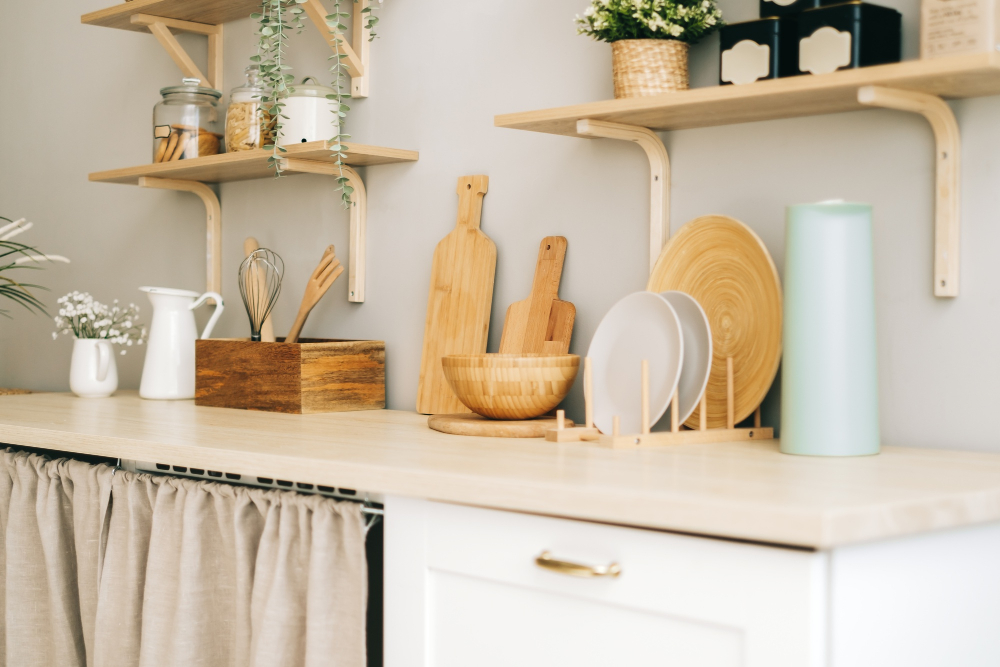
Before you start drilling holes into your walls, make sure you have the right tools and equipment for the job. It’s also important to locate any electrical wires or plumbing pipes that may be hidden behind the wall before drilling.
To ensure maximum stability and prevent accidents, use sturdy brackets that can support the weight of your shelves and their contents. Make sure they are properly anchored into studs or solid wood blocking within the wall.
If you’re unsure about how to install floating shelves safely on your own, consider hiring a professional handyman or contractor who has experience with this type of installation. They will know how to properly secure each shelf so that it stays firmly in place without damaging surrounding walls.
Shelf Height Considerations for Pets and Children

If you have pets or children at home, it’s essential to take extra precautions when deciding on shelf height. For example, if you have a curious cat that likes to jump up onto counters and explore high places, hanging your shelves too low could pose a risk for them knocking items off or even injuring themselves.
Similarly, if you have young children in the house who are just learning how to walk and grab things within their reach – placing heavy objects on lower shelves can be dangerous. In such cases where there are kids around make sure that all sharp utensils like knives should always be kept out of reach.
To ensure maximum safety for both pets and children while still maintaining functionality and style in your kitchen design- consider mounting higher shelving units with secure brackets so they cannot easily tip over or fall down accidentally.
Best Materials for Kitchen Shelves
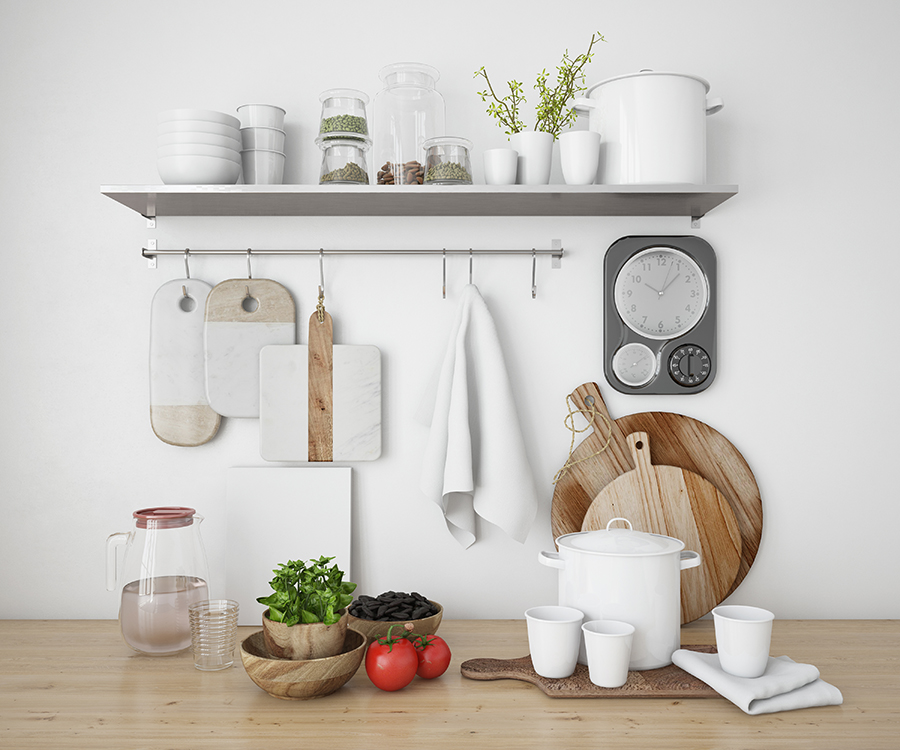
The most popular materials include wood, metal, glass and acrylic. Each material has its own unique advantages and disadvantages.
Wooden shelves are a classic choice that can add warmth and character to any kitchen style. They come in various types of wood such as oak, maple or cherrywood which offer different colors and textures depending on your preference.
Metal shelves provide a sleek modern look that is perfect for contemporary kitchens. Stainless steel is the most common type of metal used in kitchen shelving due to its durability and resistance to rusting.
Glass shelves create an illusion of space by reflecting light around the room while also providing an elegant touch with their transparency. However, they require more maintenance than other materials since they tend to show fingerprints easily.
Acrylic or plastic shelving offers a budget-friendly option that’s easy-to-clean but may not be as durable as other options over time.
Choosing the Right Shelf Thickness

The first is the weight of the items you plan on storing on them. If you’re planning on using your shelves to store heavy kitchen appliances or large cookbooks, thicker shelves will be able to support more weight without sagging or bending.
Another factor that can influence shelf thickness is their length and width. Longer and wider shelves require more structural support than smaller ones, so opting for a thicker material can help prevent warping over time.
Consider the overall aesthetic of your kitchen when selecting shelf thickness. Thicker shelving tends to have a bolder look that works well in modern kitchens with clean lines and minimalistic design elements.
On the other hand, thinner shelving may be better suited for traditional kitchens with ornate cabinetry and decorative accents.
Ultimately, choosing the right shelf thickness depends largely on personal preference as well as practical considerations like storage needs and available space in your kitchen area.
Shelf Bracket Options

The bracket will determine how much weight your shelf can hold and how secure it will be. There are several types of brackets available in the market, each with its own set of advantages and disadvantages.
One popular option is a concealed bracket that attaches to the wall stud using screws or bolts. These brackets are hidden from view once installed, giving your shelves a clean and minimalist look.
However, they require precise measurements during installation since they cannot be adjusted after mounting.
Another type of bracket is an L-shaped metal support that attaches directly to both sides of your shelving unit for added stability. These brackets come in various sizes and finishes but may not provide enough support for heavier items like large pots or appliances.
For those who prefer an industrial look, pipe fittings can also serve as sturdy supports for floating shelves made from wood planks or reclaimed materials such as pallets or barn wood.
Maximizing Kitchen Storage
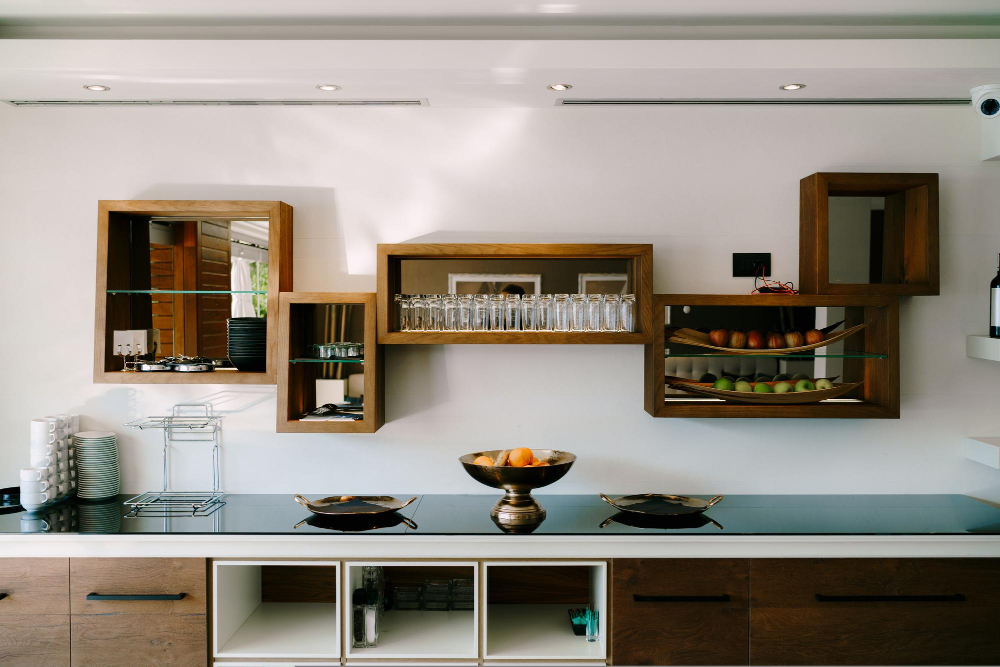
Floating shelves are a great way to add extra storage space without taking up valuable floor space. However, before you start installing your new shelves, take some time to assess your kitchen’s layout and identify areas where you can maximize storage potential.
One of the best ways to make the most of your floating shelves is by customizing their height and spacing based on what items you plan on storing. For example, if you have a lot of tall bottles or jars that need storing in the pantry area, consider installing taller shelving units with more vertical clearance between each shelf.
Another way to maximize kitchen storage is by using corner spaces effectively. Corner floating shelves can be an excellent solution for awkwardly shaped kitchens where traditional cabinets may not fit well.
Don’t forget about underutilized areas such as above windows or doors – these spots can be perfect for adding additional shelving units that won’t interfere with daily activities but will provide much-needed extra space for storing infrequently used items like seasonal cookware or serving dishes.
Maintaining Shelves for Longevity

Regular cleaning is essential for keeping your shelves looking great and preventing any damage from accumulating over time. Use a soft cloth or microfiber towel to wipe down the surface of each shelf, removing any dust or debris that may have accumulated.
Avoid using harsh chemicals or abrasive cleaners on your floating shelves as they can cause discoloration and scratches. Instead, opt for gentle cleaning solutions like warm water mixed with mild dish soap.
Another way to maintain the longevity of your kitchen shelves is by avoiding overloading them with heavy items beyond their weight capacity. Be sure to check the manufacturer’s guidelines before placing anything too heavy on top of them.
Lastly, keep an eye out for signs of wear and tear such as cracks in wood or rusting brackets if you’re using metal ones. Address these issues promptly before they worsen into bigger problems that could compromise both safety and aesthetics in equal measure.
How Much Weight Can a Floating Shelf Hold?

The last thing you want is for your beautiful new shelves to come crashing down due to excess weight. While the exact amount of weight a floating shelf can hold depends on various factors such as its size, thickness, and material used in construction, most standard floating shelves are designed to support up 20-30 pounds per linear foot.
It’s essential not only that you choose high-quality materials but also that you install them correctly with sturdy brackets or anchors capable of supporting their intended load capacity. If planning on storing heavier items like large pots or appliances on your kitchen shelving unit, it’s best practice always double-checking manufacturer guidelines before installation.
By taking into account these considerations when selecting and installing floating shelves in your kitchen space will ensure both functionality and safety while adding an elegant touch!
FAQ
What is the standard height between floating shelves?
The standard height between floating shelves is typically 12 inches, but increasing it to 15 or 18 inches can enhance exposure and accessibility.
What is the standard height between shelves?
The standard height between shelves is 8 to 12 inches.
What is the average size of kitchen floating shelves?
The average size of kitchen floating shelves is typically 11.25″-12″ deep, which is large enough to hold most dishware and consistent with many upper cabinet depths.
How can the height of floating shelves be customized for optimal kitchen storage and functionality?
To customize the height of floating shelves for optimal kitchen storage and functionality, measure and consider the specific items and their sizes to be stored while adjusting shelves accordingly.
What factors should be considered when determining the appropriate height for floating shelves in a kitchen?
When determining the appropriate height for floating shelves in a kitchen, consider factors such as the ceiling height, usability, aesthetics, and potential obstruction of cabinets or appliances.
How do floating shelf materials and styles impact the overall kitchen design and height placement?
Floating shelf materials and styles impact the overall kitchen design and height placement by influencing the aesthetic appeal, functionality, and visual balance in the space.




